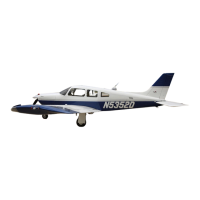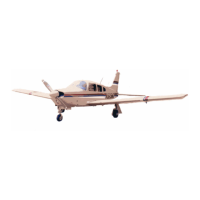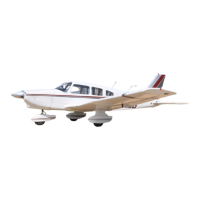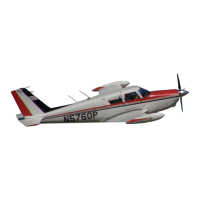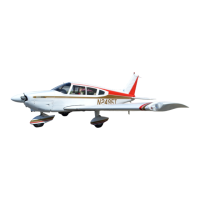HEATING.
HEATER MAINTENANCE.
If the exhaust manifold should become defective, carbon monoxide fumes may be discharged into the
cabin area, therefore it is imperative that the exhaust manifold (on PA-28RT-201) be inspected regularly. The
heater exchanger must be removed in order to inspect the tailpipe on PA-28RT-201T; the heat muff must be
removed before the manifold assembly can be inspected on PA-28RT-201. Check the operation of the pushpull
controls to insure the valve doors function properly. When the controls are pulled out, the door should be
completely open to permit full airflow. When the controls are pushed in, the valves should close off all air
passage and vent the air into the engine compartment. Refer to either Figure 21-1 or 21-2 for an illustration of
the heater system.
OVERHEAD VENT SYSTEM. “NOT AVAILABLE WITH AIR CONDITIONING”
The overhead vent system utilizes the ducting noted in Figure 21-3. Air enters an inlet at the top of the fin
and is ducted through the vent system. Small louvers control the flow of air into the cabin. This vent system
may also be equipped with a blower (optional). This blower, mounted aft of the close-out panel underneath the
top of the fuselage, will force air through the overhead vent system whenever desired.
COOLING.
AIR CONDITIONING SYSTEM OPERATION.
The air conditioning system in these airplanes is a recirculating, independent unit. It filters, dehumidifies
and cools the air as it cycles through the evaporator. The unit is operated from controls mounted on the right
side of the instrument panel. The air conditioning master switch has three positions: “FAN only, OFF and AIR
COND.” When the “AIR COND” position is selected the compressor clutch engages, the condenser scoop
opens and the circulating fan is turned on. The temperature is controlled by a thermostat operated by the
temperature control selector. A three position fan switch (LOW-MED-HIGH) operates the blower. The fan
may be operated to circulate air without using the air conditioning unit.
The air conditioning system uses Refrigerant 12 as the refrigerant. The refrigerant enters the compressor as
a vapor. The compressor pressurized the heat-laden vapor until its pressure and heat reach a point much hotter
than the outside air. The compressor then pumps the vapor to the condenser where it cools and changes to a
liquid. The liquid then passes to the receiver- d e h y d r a t o r. Its function is to filter, remove any moisture and
insure a steady flow of liquid refrigerant into the evaporator through the expansion valve. The expansion valve
is a temperature controlled metering valve which regulates the flow of the liquid refrigerant to the evaporator.
The evaporator absorbs the heat from the air passing over the coils. From the evaporator the refrigerant vapor
returns to the compressor where the cycle is repeated.
—NOTE—
Charts 2101 and 2102 win assist in locating and correcting
malfunctions which may arise in this system.
21-50-01
Page 21-11
December 1, 1978
1F10
PIPER AIRCRAFT
PA-28RT-201 / 201T
MAINTENANCE MANUAL
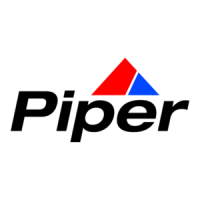
